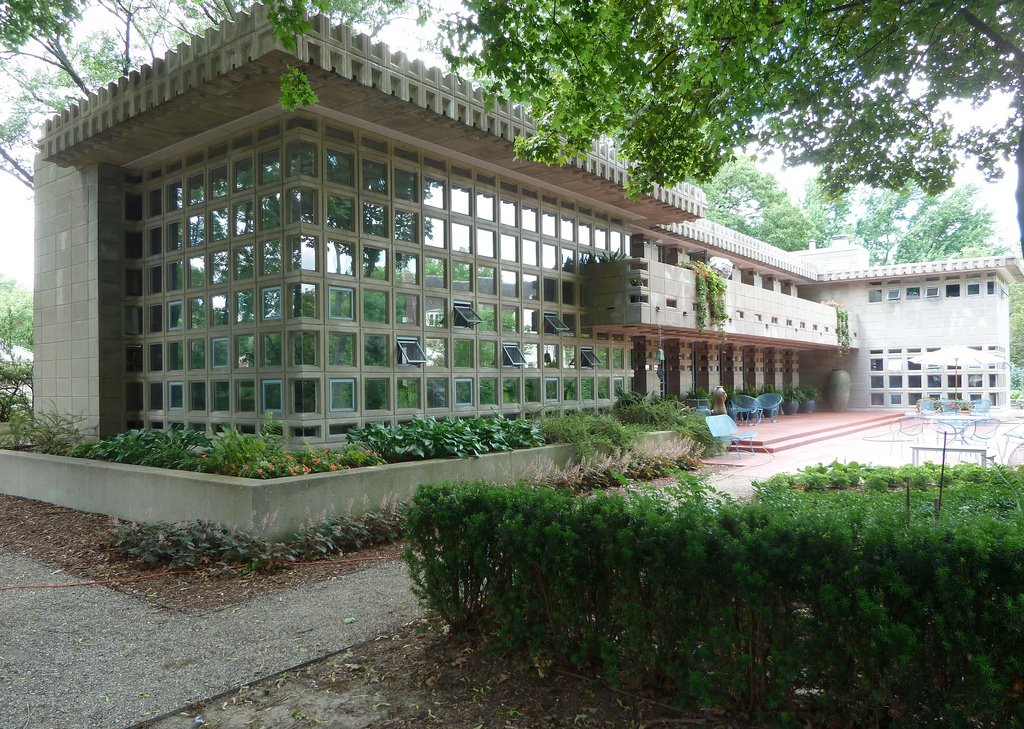#9700. Modular perforated facade with natural landscape integration
Before us stands a striking example of organic architecture in the Frank Lloyd Wright tradition — a building with a characteristic geometric modular facade. The main compositional element is an impressive wall of square concrete blocks with rhythmic glazing, creating the effect of an openwork lattice. This perforated structure provides abundant natural light to the interior spaces while maintaining privacy.
The facade demonstrates masterful use of reinforced concrete and glass, with an emphasis on horizontal lines and the brutalist texture of materials. Particularly noteworthy is the play of light and shadow on the geometric surface of the facade, which changes throughout the day. The upper part of the building is adorned with a projecting cornice with vertical elements, giving the structure completeness and visual lightness.
The architecture seamlessly integrates with the surrounding landscape through abundant greenery, including built-in flower beds and plants partially entwining the structure. This technique blurs the boundary between building and nature — a classic principle of organic architecture.
For private construction, one could borrow techniques such as: modular facade structure, use of perforated elements for natural lighting, integration of greenery directly into the building's architecture, and emphasis on horizontal lines to visually expand the space. Even on a smaller scale, these solutions can give a home expressiveness and connection with the environment.
